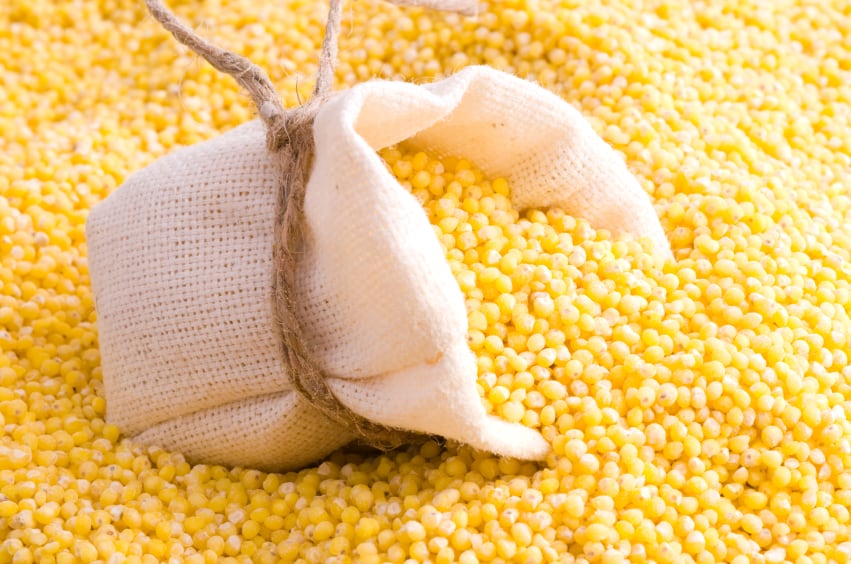Alternative proteins are widely viewed as a sustainable answer to global protein demand, but their adoption remains slow – largely due to lingering concerns around taste, texture and nutrition.
“Instead of asking consumers to give up the foods they love, the Good Food Institute is accelerating alternative proteins by helping companies make products that are delicious, affordable and accessible,” said Dr Wasamon Nutakul, science and technology manager at Good Food Institute (GFI) APAC.
Speaking at the Growth Asia Summit 2025 in Singapore, she outlined four ways to improve alternative proteins and increase uptake.
Types of alternative proteins
Alternative proteins serve as substitutes for conventional animal products, designed to be more sustainable or health-focused.
Plant-based: Made from legumes, grains, nuts, seeds, or vegetables; designed to replicate the taste and texture of meat using only plant ingredients.
Cultivated: Also known as lab-grown or cell-based meat; produced by growing animal cells in controlled conditions without raising or slaughtering animals.
Fermentation: Uses microbes (like fungi or bacteria) to produce protein-rich ingredients or enhance flavour and texture – includes traditional fermentation and precision fermentation.
1) Improve bioavailability of alternative proteins for better nutrient absorption
Plant-based foods often contain antinutrients – compounds like phytates, oxalates and lectins – that can interfere with the absorption of protein, iron, zinc and other minerals.
However, food processing methods such as fermentation or soaking can reduce these compounds and improve nutrient availability.
The addition of fungi, especially during fermentation, can help degrade antinutrients like glucosinolates while also contributing additional protein and micronutrients to enhance the nutritional quality of plant-based diets.
2) Improve fortification efforts to enhance nutritional profile
Fortification of plant-based meat products varies widely across different countries.
But overall, the key nutrients to focus on include vitamin B12, iron, vitamin D, calcium, iodine and zinc – all of which are particularly important when replacing animal-based foods.
One helpful approach is the Netherlands Nutrition Centre’s Wheel of Five, a dietary guideline tool that helps consumers choose nutritionally balanced foods, including healthier plant-based meat options.
However, greater consistency in fortification standards would provide even better support for consumers.
Dr Nutakul also highlighted new strategies, including the use of nutrient-rich sources like fungi and algae, along with technologies such as fermentation and encapsulation, to enhance the nutritional profile of alternative proteins more effectively.
Fermentation and encapsulation
- Fermentation is a natural process where microorganisms like bacteria or yeast break down food components, often increasing nutrient availability and improving digestibility.
- Encapsulation is a technology used to protect sensitive nutrients (like vitamins or probiotics) by coating them in a protective layer, helping to preserve their stability and improve absorption in the body.
3) Salt reduction a key concern for alternative proteins
Excessive salt intake is linked to high blood pressure, a major risk factor for cardiovascular disease.
While unprocessed meat typically contains less salt than plant-based meat, salt is often added during food processing or preparation.
Compared to processed meat, however, plant-based options generally have similar or even lower salt levels.
Reducing salt content remains a key nutritional priority for plant-based meat products. This can be addressed through the use of lower-sodium ingredients, flavour enhancers, and salt substitutes like herbs.
Technologies such as fermentation and enzymatic processing can also help develop umami flavours naturally, reducing the need for added salt without compromising taste.
What helps reduce salt without compromising taste?
Flavour enhancers: Ingredients that intensify taste, making food more palatable with less salt.
Salt substitutes: Ingredients such as potassium salts or herbs that provide savoury flavour with lower or no sodium.
Fermentation: A natural process where microorganisms break down food, sometimes generating savoury (umami) compounds that reduce the need for added salt.
Enzymatic processes: Use of food-safe enzymes to release natural flavour compounds – especially umami – from proteins, improving taste while lowering salt requirements.
4) Improve the fat profile of alternative proteins
Fat plays a vital role in flavour and mouthfeel, but it is also the most calorie-dense nutrient.
High intake of saturated fat is linked to health risks, while plant-based meats generally contain lower levels of saturated fat.
Additionally, adequate intake of healthy fats, such as omega-3 fatty acids, is associated with a range of positive health effects.
By contrast, omega-3 fatty acids are associated with positive health outcomes and should be included in appropriate amounts.
Improving the fat profile can involve using legumes, mushrooms, or whole grains as lower-fat bases, and incorporating unsaturated oils like algal, canola, or rice bran oil.
Technologies such as fat structuring, fermentation, and encapsulation are increasingly being used to optimise fat distribution, mouthfeel, and nutritional quality in plant-based products.
What improves the fat profile in plant-based meats?
- Low-fat bases: Ingredients like legumes (e.g. lentils, chickpeas), mushrooms, or whole grains that contribute protein and texture with less overall fat.
- Unsaturated fat sources: Healthier oils such as algal oil, canola oil, and rice bran oil, which provide essential fatty acids and lower saturated fat levels.
- Fat structuring: Techniques that modify the texture and behaviour of fats (eg using emulsions or gels) to mimic animal fat while improving the nutritional profile.
- Fermentation: Can help generate healthy fat-related compounds or improve flavour, reducing the need for added fats.
- Encapsulation: Protects and stabilises delicate fats (like omega-3s), improving shelf life and delivery in food products.
Dr Nutakul emphasised that alternative proteins offer a promising solution for a more sustainable food system.
Through its focus on advancing science, catalysing private-sector innovation, and advocating for policy change, the Good Food Institute aims to address critical barriers – including nutrition, flavour, and accessibility – that are slowing the mainstream adoption of alternative proteins.





